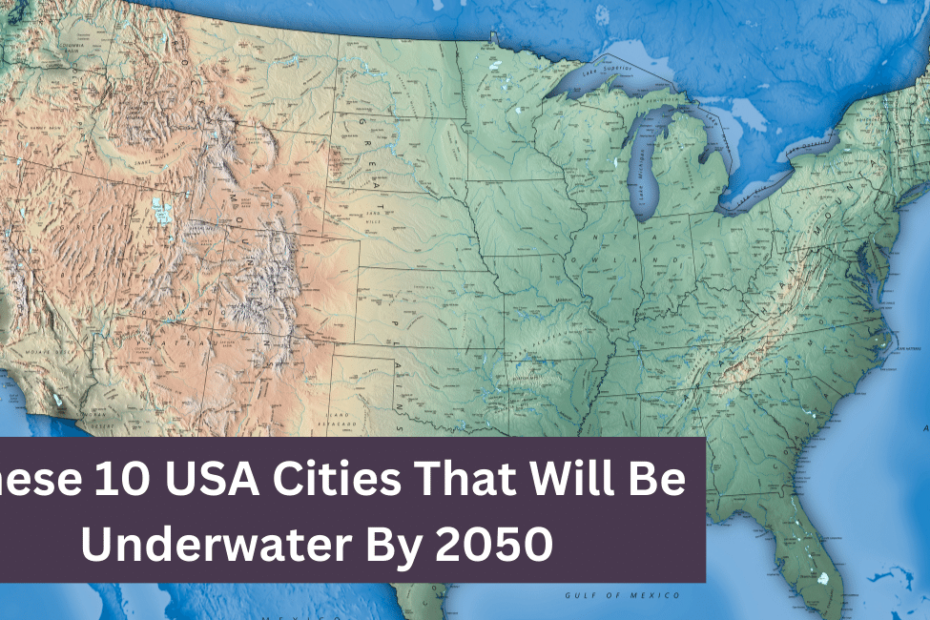Here are ten U.S. cities that are projected to face increased risk of flooding and potential inundation by 2050 due to rising sea levels and climate change:
1. Miami, Florida
Miami is one of the most vulnerable cities in the United States to sea level rise. With its low-lying coastal areas, the city faces regular flooding even during high tides. By 2050, significant parts of Miami, including iconic areas like Miami Beach and downtown, could be at risk of being underwater if current trends continue.
2. New Orleans, Louisiana
New Orleans already experiences challenges with flooding due to its location below sea level and reliance on levees and pumps for protection. The city’s vulnerability to storm surges and sea level rise makes it susceptible to increased inundation by 2050, particularly during hurricane events.
3. New York City, New York
New York City’s coastal areas, including parts of Manhattan, Brooklyn, and Queens, face risks from rising sea levels and storm surges. Superstorm Sandy in 2012 highlighted the city’s vulnerability, and projections suggest that by 2050, more neighbourhoods could be at risk of flooding and potential inundation, especially during extreme weather events.
4. Norfolk, Virginia
In the Hampton Roads area, Norfolk is already experiencing recurrent flooding and subsidence. With its extensive coastline and military installations, the city faces significant challenges due to the rise of sea level. By 2050, projections indicate that parts of Norfolk could be regularly underwater, impacting residents and critical infrastructure.
5. Charleston, South Carolina
Charleston’s historic district and coastal areas are vulnerable to flooding from storm surges and tidal inundation. The city’s location along the Atlantic Ocean makes it susceptible to sea level rise impacts. By 2050, increased flooding risks could affect Charleston’s cultural heritage and economic activities.
6. Galveston, Texas
Galveston, situated on a barrier island along the Gulf of Mexico, has a long history of grappling with coastal hazards. Hurricanes, storm surges, and erosion are ongoing challenges for this seaside community. With sea levels projected to rise, Galveston faces heightened risks of flooding and potential submergence of low-lying areas by 2050. The city’s efforts to fortify coastal defences and implement sustainable development practices will be crucial in adapting to these evolving threats.
7. Virginia Beach, Virginia
Virginia Beach, known for its expansive beaches and vibrant tourism industry, is increasingly vulnerable to coastal hazards. Recurrent flooding, erosion, and sea level rise pose significant risks to the city’s infrastructure and coastal ecosystems. By 2050, projections indicate that Virginia Beach could experience more frequent and severe inundation events, impacting residential areas, recreational facilities, and transportation networks. Implementing nature-based solutions such as wetland restoration, beach nourishment, and resilient infrastructure designs will enhance the city’s resilience to future coastal challenges.
8. San Francisco, California
San Francisco’s iconic waterfront areas, including the Embarcadero and Mission Bay, face growing threats from rising sea levels. The city’s bustling urban environment, characterized by high-density development and vital economic hubs, is at risk of increased flooding and coastal erosion by 2050. Protecting critical infrastructure such as ports, airports, and transportation systems from inundation will require innovative adaptation strategies, including seawalls, levees, and green infrastructure. Collaborative efforts between government agencies, businesses, and communities are essential for building coastal resilience and ensuring sustainable development along San Francisco’s vulnerable shoreline.
9. Houston, Texas
Houston, a major economic centre and energy hub, is susceptible to flooding from hurricanes, storm surges, and intense rainfall events. The city’s extensive network of bayous and waterways makes it particularly vulnerable to inundation, especially in low-lying areas and flood-prone neighbourhoods. By 2050, sea level rise will exacerbate these flooding risks, potentially affecting residential communities, industrial zones, and critical infrastructure. Implementing green infrastructure solutions, enhancing floodplain management practices, and promoting community resilience initiatives are vital for mitigating Houston’s vulnerability to future flooding and climate impacts.
10. Boston, Massachusetts
Boston’s historic waterfront districts, including the Seaport District and East Boston, face increasing risks from sea level rise and storm surges. The city’s coastal assets, cultural heritage sites, and economic vitality are threatened by projected inundation by 2050. Protecting Boston’s coastal neighbourhoods and vital infrastructure requires a multifaceted approach integrating nature-based defences, adaptive building designs, and strategic land-use planning. Collaborative partnerships between public agencies, private stakeholders, and community organizations are critical for implementing resilient solutions and safeguarding Boston’s coastal resilience for future generations.
